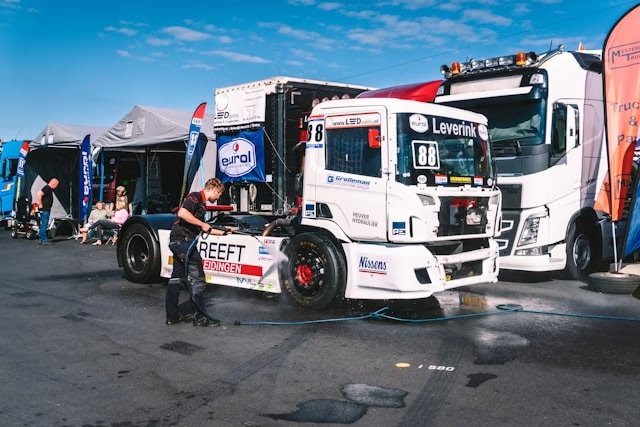Boost Truck Diesel Performance with Delete Kit: What You Need to Know
For diesel truck fanatics, the pursuit of top overall performance frequently leads down a path of change, and few upgrades are mentioned and debated, such as the setup of a delete package. The promise is tempting: a sizable improvement in horsepower and torque, an advanced gasoline engine system, and the removal of complicated, often failure-susceptible, emissions additives. Information on what these kits do, how they work, and, most seriously, the substantial criminal and mechanical implications, is essential before you make a decision.
The Mechanics of “Deletion”
Cutting-edge diesel engines have several sophisticated systems, such as the EGR delete kit and the Diesel Particulate Filter (DPF) device, designed to lessen harmful exhaust emissions.
1. knowledge of the Diesel Particulate filter out (DPF) and SCR structures
The DPF collects soot and other debris formed during combustion and burns it off periodically in a self-cleaning method called regeneration. Even as powerful as this gadget is at cleansing emissions, it creates backpressure, forcing the engine to work harder and sometimes reducing gasoline efficiency.
Similarly, the Selective Catalytic Reduction (SCR) machine uses Diesel Exhaust Fluid (DEF) to neutralise nitrogen oxide (NOₓ) emissions. It’s some other layer of emissions management — and some other point of potential limit.
A DPF delete package replaces the filter with an instant pipe, immediately decreasing exhaust backpressure. The result is smoother exhaust waft, faster rapid spool-up, and measurable power gains — often among 30–70 additional horsepower and as much as a hundred and eighty lb-feet of torque, specifically whilst blended with a custom track. Owners additionally revel in fewer protection hassles when you consider that there are no longer regeneration cycles or filter clogging issues.
2. The role of the Exhaust Gas Recirculation (EGR) system
The EGR machine recirculates a portion of exhaust gasoline back into the consumption manifold to lower combustion temperatures and decrease NOₓ formation. While effective for emissions management, it has a prime disadvantage — the reintroduced exhaust includes soot, accumulating inside the combustion chamber and around valves over time. This buildup restricts airflow, diminishes energy output, and may result in long-term engine harm. Installing an EGR delete kit stops this recirculation approach completely. With the system eliminated, the engine attracts purifier, cooler air, decreasing carbon deposits and producing greater green combustion. The result is lower exhaust fuel temperatures (EGTs), improved turbocharger durability, and a faster throttle response. This alteration may be a number one improvement for drivers trying to find stronger reliability and cooler normal working performance, especially while hauling heavy loads or tackling challenging off-road conditions.
The mixed performance Payoff
Whilst the DPF and EGR structures are removed and the engine is well tuned, the overall performance improvement can be dramatic. Here’s what lovers usually note:
Accelerated Horsepower and Torque: Eliminating restrictive emissions components permits the engine to breathe more correctly, unleashing extensive strength that was previously confined.
Enhanced gas efficiency: The engine burns gasoline extra efficiently with reduced backpressure, improving overall performance and mileage.
Many customers record a modest but significant improvement in MPG.
More suitable Reliability: Without DPF sensors, EGR valves, or regeneration cycles, the danger of machine failure decreases notably. Maintenance prices drop, and downtime becomes minimal.
Improved Throttle reaction: faster lag decreases, giving the truck a more competitive and responsive riding feel.
These mechanical advantages explain why delete kits stay popular among off-road and competition diesel enthusiasts. However, the profits come with extreme criminal and environmental considerations.
Prison and Environmental Concerns
While the mechanical blessings of delete kits are simple, removing or tampering with factory-hooked-up emissions additives is unlawful for automobiles operated on public roads within the U.S. The Clean Air Act explicitly prohibits any change that turns off emissions controls. The Environmental Safety Organisation (EPA) enforces those regulations strictly, and consequences can reach tens of dollars for individuals or shops observed in violation.
Delete kits are consequently marketed for off-road, competition, or export use. Putting one on a road-registered truck can result in fines and void your manufacturer’s powertrain warranty. Furthermore, without emissions structures, your vehicle will produce significantly more soot and nitrogen oxides — dangerous pollution that degrades air quality.
Deleting emissions systems is a high-risk change if your vehicle is used on public roads. However, for vehicles used exclusively in controlled environments, off-road racing, or personal land programs, the blessings can also outweigh the drawbacks; however, criminal focus is essential.
Selecting the proper Delete kit and Tuning answer
Niceness and compatibility are key if your application qualifies for off-road or competition use. The best l5p delete kit are constructed from TIG-welded, mandrel-bent chrome steel, ensuring sturdiness against high exhaust temperatures and vibration. Inferior substances or terrible welds can cause cracks, leaks, and performance loss.
Similarly crucial is the tuning. Once emissions systems are eliminated, the engine’s control unit (ECU) must be reprogrammed to prevent error codes and optimise overall performance. A satisfactory-best song adjusts gas mapping and timing and increases parameters to ensure secure, green operation.
For example, proprietors of GM’s Duramax engines regularly search for the best l5p delete kit, which combines top-class materials with custom tuning answers. Pairing it with a trusted tuner and an EZ Lynk or EFI live machine guarantees the proper calibration and long-term reliability.
Final Thoughts
Installing a diesel package can transform the use of a diesel truck, delivering uncooked power, improved gasoline efficiency, and simplified maintenance. But those advantages have vast criminal, environmental, and assurance implications.
If your car operates strictly off-road or in competition, a best-nice setup featuring a DPF and EGR delete kit can deliver exquisite performance profits. However, for most drivers who depend on their vans for day-to-day use, the prison and monetary risks make delete kits a choice that needs careful consideration.
Performance, after all, isn’t just about power — it’s about balance, responsibility, and making informed choices for your truck and the environment.



